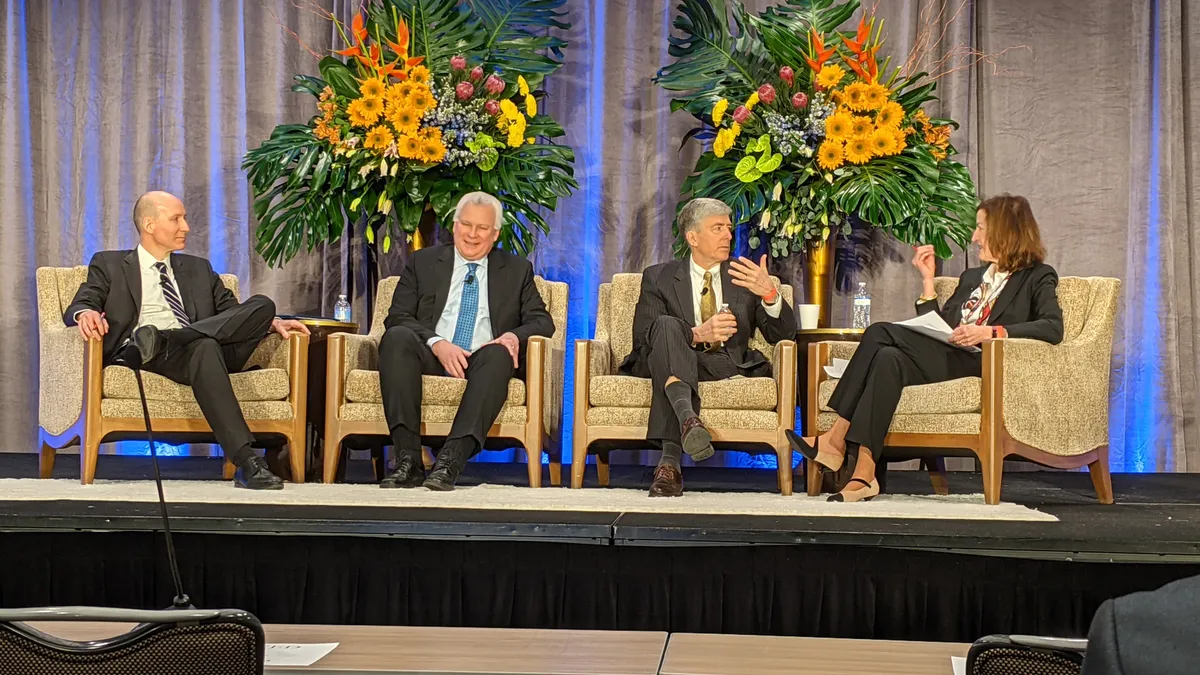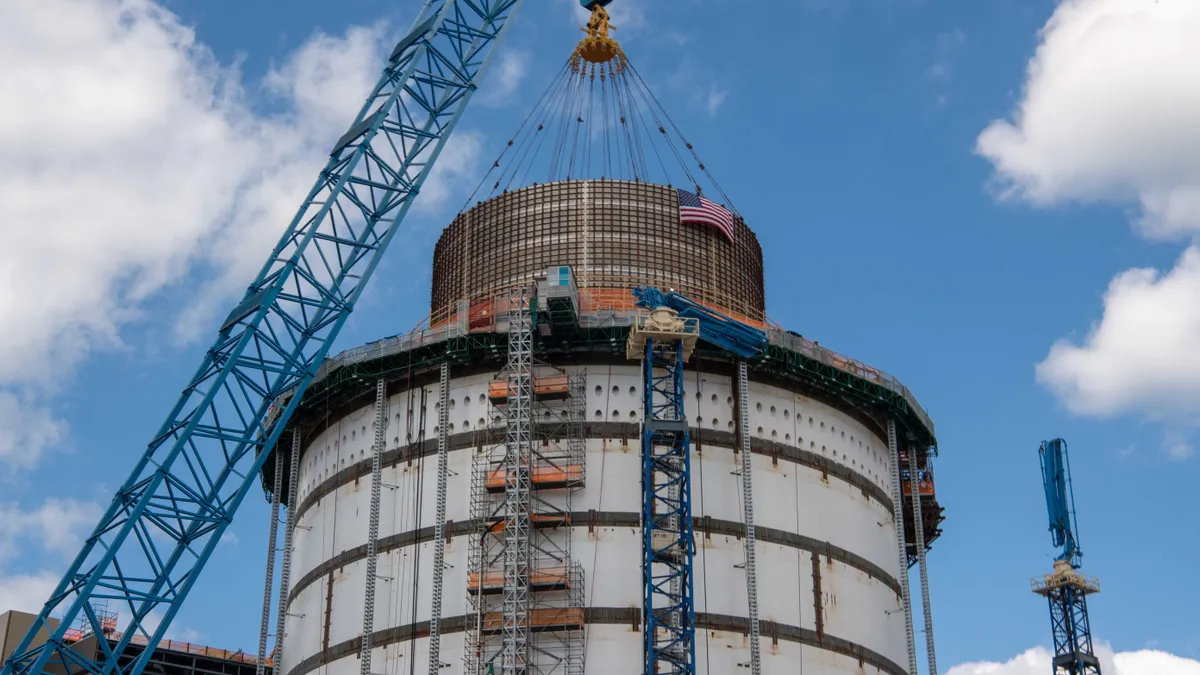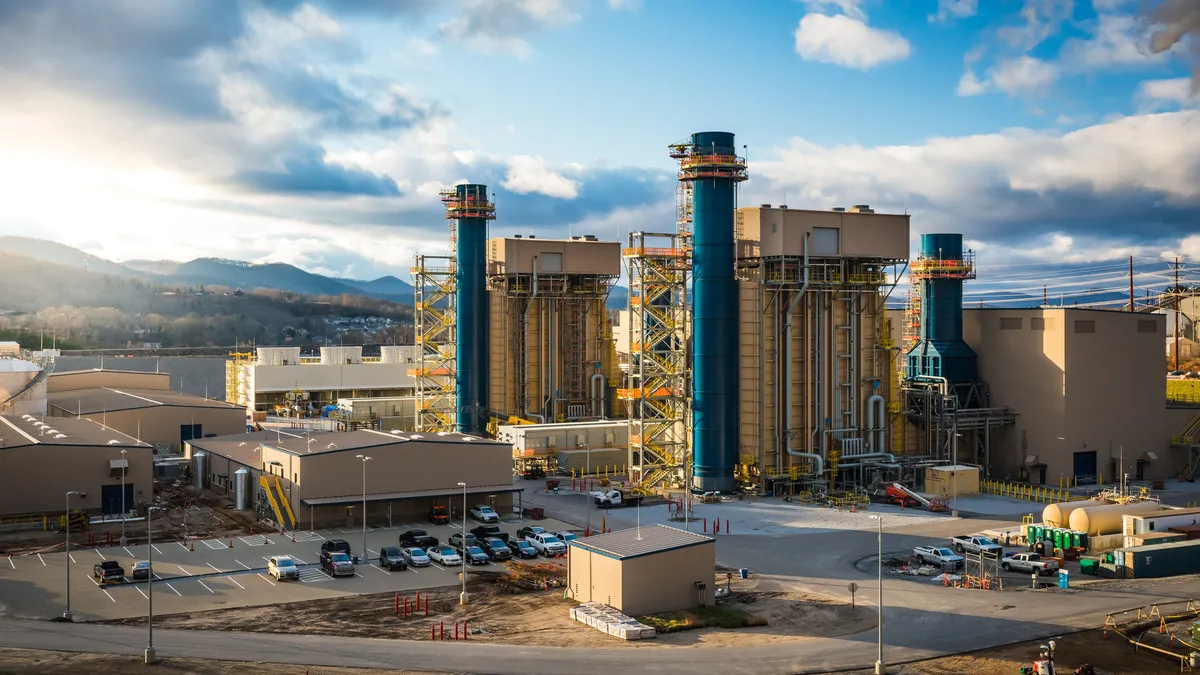This opinion piece is part of a series from Energy Innovation's policy experts on advancing an affordable, resilient and clean energy system.
The power and gas system is rapidly changing from meeting relatively predictable customer demand with fossil fuels, to managing increasingly frequent extreme weather while integrating unprecedented amounts of clean energy. State utility regulators are trying to navigate this transition by guiding their electric and gas utilities to reduce emissions while maintaining affordable rates and reliable service.
This tension captured regulators' attention at the National Association of Regulatory Utility Commissioners' (NARUC) 2022 Winter Policy Summit last week, manifesting in three imperatives: transmission planning to unlock access to low-cost renewables, holistic approaches to planning for system reliability in the wake of last February's Winter Storm Uri, and opportunities to reduce emissions from natural gas systems.
Summit panelists highlighted near-term actions regulators can take to guide an affordable and reliable clean energy transition, such as integrating grid-enhancing technologies (GETs) to boost capacity on existing transmission lines, prioritizing demand-side measures in reliability planning, and plugging gas pipeline methane leaks.
But, to advance these imperatives over the longer term, regulators must also ask their staff and utilities how they plan to collaborate to build new interstate transmission lines, design new resource adequacy metrics, and achieve fully decarbonized energy systems without facing costly dead-ends. Below we share our top takeaways from the conference, along with our recommendations for policymakers and utilities to achieve these goals.
Transmission buildout requires long-term planning, but short-term solutions provide fast congestion relief
Accelerating transmission buildout is one of the most important steps toward affordably integrating renewables onto the grid, and NARUC panelists urged action to overcome barriers like cost allocation, long-term planning bottlenecks, local community opposition and lengthy environmental reviews. Several Federal Energy Regulatory Commission proceedings and U.S. Department of Energy (DOE) initiatives intend to plan for and build interregional transmission. But these efforts will take time, and with hundreds of gigawatts of renewables already stuck in interconnection queues around the country, gridlock must be addressed now.
GETs are one of the best short-term tools for increasing transmission capacity. At the conference, David Townley, director of public policy at CTC Global, said "re-conductoring" is the "fastest, lowest-cost way to add substantial capacity to the existing system." This process replaces existing conventional steel core lines with lighter-weight conducting materials, can add 50-100% more capacity to lines, and can be completed in as little as 18 to 24 months. Studies find that other GETs, such as dynamic line ratings, advanced power flow control, and advanced topology control, can also have a significant impact, together increasing the renewable potential of the Kansas and Oklahoma grids, for example, from 2,600 MW to 5,200 MW.
Regulators should ask utilities how they intend to integrate these low-cost, readily-available technologies into their transmission planning and interconnection processes. The recently-signed Infrastructure Investment and Jobs Act added $3 billion to DOE's Smart Grid Investment Grant Program. As DOE begins distributing these funds as a part of its Building a Better Grid Initiative, state utility stakeholders should engage in the solicitation design process and encourage utilities to apply for this funding.
Regulators and utilities can also address transmission congestion by using existing rights of way. Many states are already siting lines along highways and railroads to streamline new transmission buildout, and the Federal Highway Administration has encouraged this process. Because siting transmission along rights of way requires collaboration among many different agencies, regulators should start by forming intergovernmental partnerships to increase communication with state transportation departments.
Winter Storm Uri was a wake-up call for regulators
Rapidly expanding transmission capacity will also support grid reliability, which, according to NARUC panel discussions, is clearly still weighing on regulators' minds following Winter Storm Uri. Regulators and grid operators have long measured electric system reliability by comparing power generation capacity to expected peak demand, requiring a certain "reserve margin" to protect against unusually high demand or generator outages. However, panelist comments suggest Winter Storm Uri has shifted how regulators are thinking about reliability, focusing more now on demand-side measures, the need for new reliability metrics, and the interconnectedness of electric and gas systems.
First, reliability planning should focus much more on demand-side measures. Energy expert Alison Silverstein said her report card grading Texas' response one year after the state's multi-day outages stressed energy efficiency as "the single most effective and low-cost way to protect Texas electric customers and its grid against the costs and risks of power system expansion and failure." Energy Innovation research on Winter Storm Uri also demonstrates the value of demand-side action, including updating building codes and supporting home weatherization.
Second, regulators should direct their staff to design more sophisticated reliability metrics that account for a changing climate and resource mix, acknowledging that the past is no longer a good predictor of the future. Silverstein said determining the prudency of utility investments should center on judging them against potential future conditions rather than increasingly less relevant historical baselines. Organizations like the Energy Systems Integration Group are leading this effort by designing new approaches to resource adequacy that depart from static reserve margins to instead facilitate power generation portfolios capable of meeting load in every hour of the year.
Third, regulators must confront the interconnectedness of electric and gas systems to ensure reliable power. Former Chair of the Public Utility Commission of Texas Robert Gee noted natural gas comprised 40% of Texas' power generation, but 45% of this capacity was temporarily unavailable during Winter Storm Uri. NRG Vice President Travis Kavulla also noted gas sellers have relatively opaque contracts, allowing them to claim they can't fulfill fixed-price agreements, only to sell gas to other buyers at much higher prices during reliability events (termed "price majeure"). State legislators and utility regulators should improve coordination between electric and gas stakeholders and hold them to similar standards. In Texas, for example, power plant winterization efforts are underway, but parallel efforts to winterize natural gas wellheads and pipelines have not progressed apace.
Gas system transition planning looks to fuel replacements
In addition to winterization to protect against extreme weather, regulators are looking to address the root cause of climate change through gas system decarbonization, but they must be cautious about proposals that may not prove viable over the long term.
Gas utilities subject to emissions reduction requirements are exploring immediate actions for methane leak reduction through monitoring and pipeline repair. However, many are also eagerly proposing renewable natural gas (RNG) and hydrogen as part of their longer-term decarbonization pathway.
NARUC panelists discussed the potential of near-term uptake of "certified natural gas" with verified low-methane emissions intensity to plug methane hemorrhaging from the gas supply chain. Panelists from the utility Washington Gas and gas producer EQT both highlighted the minimal cost impact of switching to certified natural gas, but regulators should ask their utilities how they will achieve close-to-zero methane emission intensities while exploring larger transition pathways.
However, RNG resource availability has thus far been limited, and widespread RNG reliance may not be scalable. While GTI Energy promoted hydrogen as a fixture of a decarbonized gas system, hydrogen production can still generate sizable emissions depending on the production method. Cost impacts and challenges around scalability, pipeline and end-use appliance compatibility, and safety also require additional regulatory scrutiny before significant investments are approved. Regulators must determine the feasibility and decarbonization potential of these proposals by requesting extensive information on total supply chain emissions and how they compare on cost and emissions bases to other end-use decarbonization strategies like electrification.
NARUC discussions did not cover larger paradigm-shifting questions around how building electrification — which has gained momentum in states including Colorado, Illinois, Minnesota and Washington — may impact future gas demand. Regulators should ask utilities how long-term strategies for optimizing decarbonization, reliability and affordability may shift the type of fuel supplied for different energy needs across gas and electric systems.
Aligning immediate and long-term needs for climate
Regulators are grappling with immediate needs surrounding interconnecting renewables and increasingly frequent storms causing outages. They're also simultaneously being asked to plan for large-scale gas-system decarbonization that includes the potential for new fuels, raising questions of feasibility and emissions reduction potential.
Fortunately, near-term solutions including GETs, demand-side measures and plugging gas-system methane leaks provide pathways for progress. At the same time, regulators must also critically examine any decarbonization proposals to determine if they will actually meet their intended goals rather than leave customers with higher costs — and few emission reductions.






















